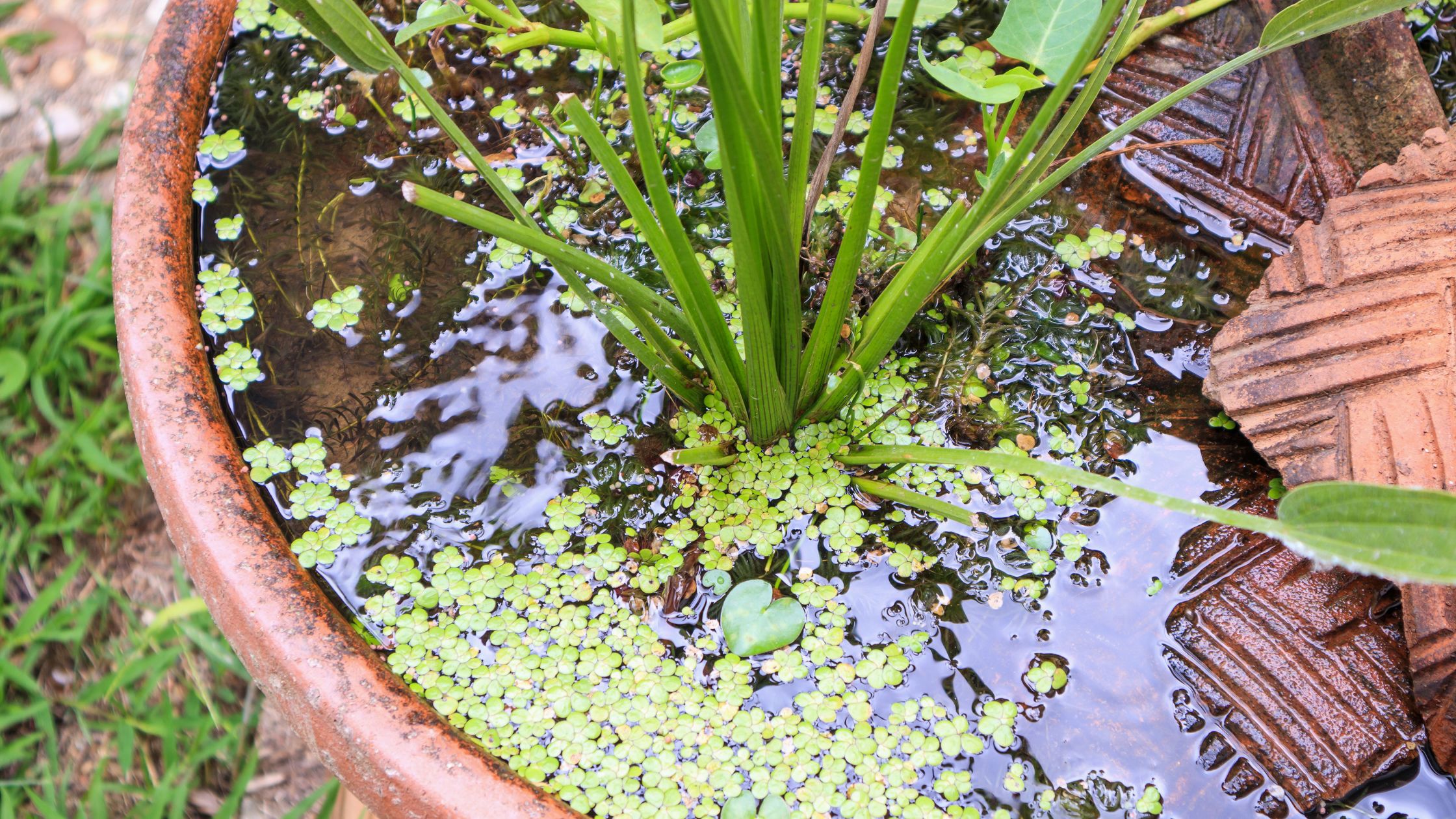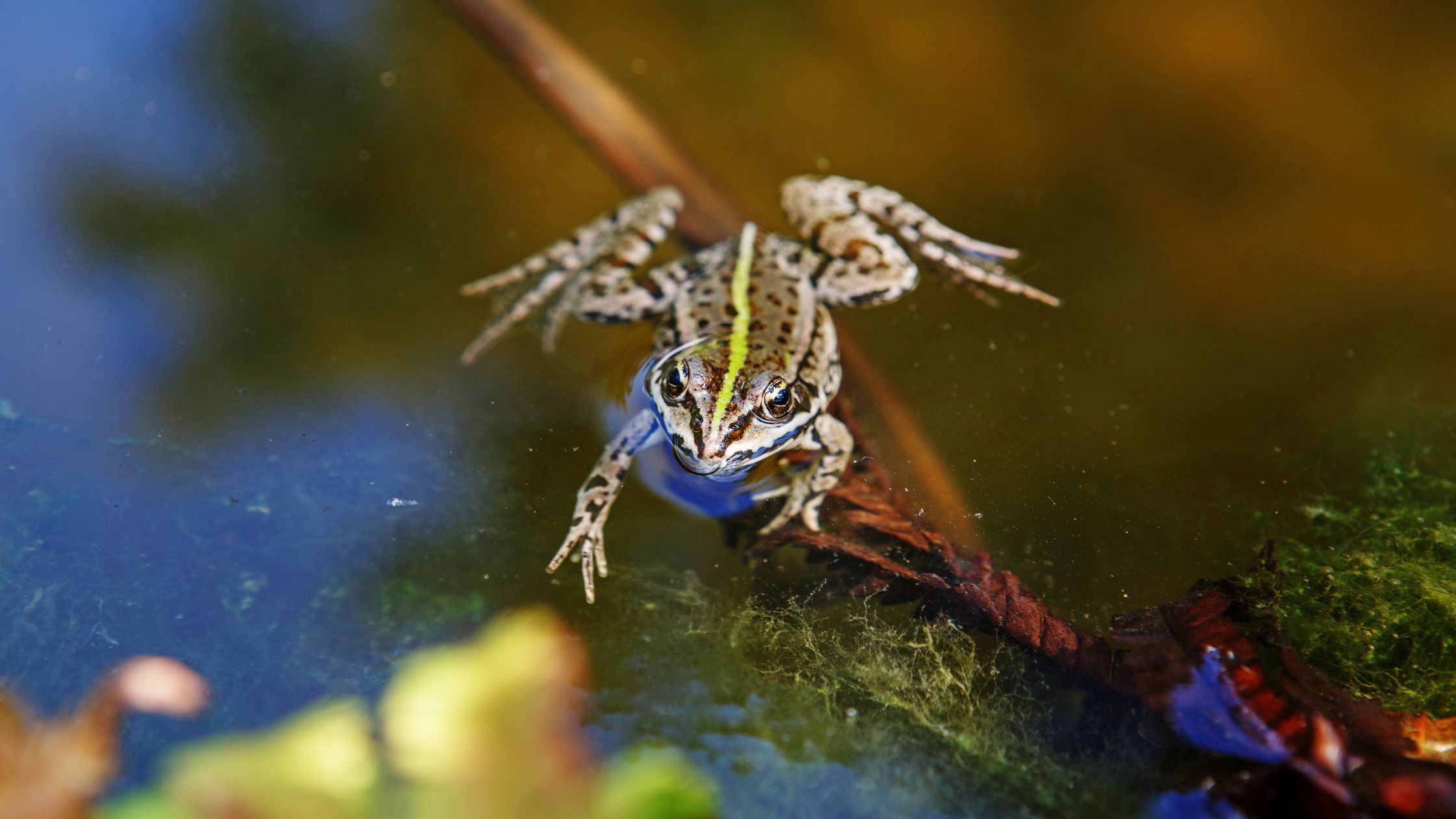Posted by Amber Williams on 3rd Jul 2024
The Mini Pond Trend That’s Sweeping the Gardening World

The gardening world has taken on sustainability with gusto. From no-mow May’s to pollinator-friendly displays, there are plenty of ways to create a haven for local wildlife in your garden.
The newest trend that’s taken the world by storm is mini ponds. Who says you need sprawling green spaces to accommodate Mother Nature’s tiniest friends? What’s even better is that they’re straightforward to assemble (and look cute too!). Here are tips on creating your own mini pond.
How to Make a Mini Pond
1 – Pick a Spot
First things first, pick the perfect spot. Make sure it’s somewhere that gets sunlight but won’t be basking in hot rays all day long. Partial shade is the sweet spot. Next, it’s time to think about how you’ll be making your pond.
2 – Find a Container
Choosing your perfect container is the next step. This can be an old plant pot or even a washing-up bucket. Or you could dig a hole in the ground and cover it with a pond liner. Whatever you choose, ensure it’s watertight (no holes or cracks!). If you see any cracks or holes, simply seal them with silicone.
3 – Fill the Pond
Finally, the fun part! Line the bottom of your container with a layer of gravel or rocks. You could even add some platforms with logs or bricks, giving some friendly frogs a handy perch. Don’t forget to include a slope that goes from the ground to inside the pond to help critters climb in and out.
Filling your pond with rainwater is essential, as tap water contains far too many chemicals to be safe for a pond. Avoid filling the bottom with normal soil, as it will make the pond water go green. There is specific pond soil that will stop this from happening, as it is low in nutrients like phosphate and nitrate.
4 – Pick Your Plants
Marginal plants are perfect for ponds as they thrive in shallow water. Usually, their roots and even some of their foliage are below water. They help create a wild effect, giving the illusion that they’ve always been there. If you’re working with a pond that’s on the smaller side, make sure you pick plants that won’t become invasive by growing too quickly.
5 – Watch Wildlife Thrive

All you need to do now is sit back, relax, and wait for wildlife to come to you. It can be tempting to bring pond creatures from elsewhere, but there’s really no need – they have a way of finding ponds on their own! The size of your pond could determine what critters you see, too. For example, toads often pick a larger pond, but frogs and newts love a small, contained space.
How to Feed Wildlife in Your Garden
Giving local fauna a perch is only half the battle. Food sources can become scarce, especially in winter when things freeze over. It might also feel a bit taboo to leave out your scraps, but trust me – it can only help.
Find out more on how to feed birds and wildlife in your garden with this handy guide.
Support Pollinators With a Bee Bath
During summer, bees and butterflies are on the hunt for refreshments while hopping from garden to garden. We can give them a little helping hand by making our own bee bath!
It’s easy to do, and you don’t need any fancy supplies to achieve it. Watch this TikTok from our resident gardening expert, Hannah, for a quick how-to.
@jparkersbulbs Make a safe haven for bees in the garden! ? Did you know that upto 50% off all bees die of heat stress every Summer? And even more of tiredness on those Spring and Summer days. For the perect bee-friendly garden, make sure you've got a bee bath! #gardeningtips #gardentok #wildlife #gardenjobs #garden #diy #planttok ♬ original sound - J. Parker’s

